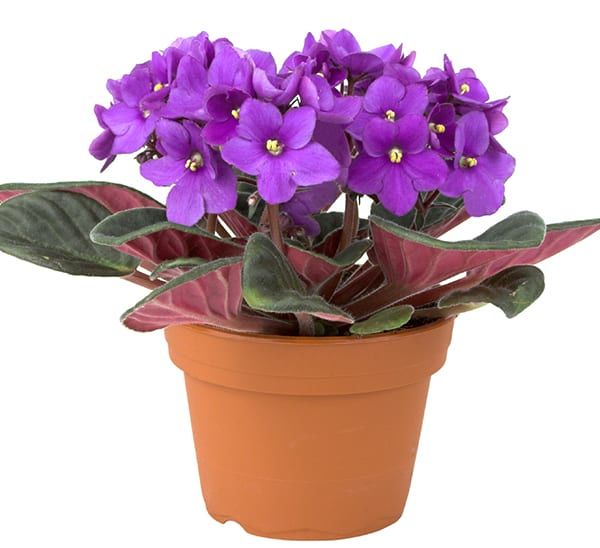
AFRICAN VIOLET
LIGHT
Your African violet loves bright indirect sunlight. Try and place it somewhere that gets loads of daylight, but not somewhere the sun is directly beating down on it. Near an eastern window or a few feet back from a southern window are ideal spots for this plant. Yellowing leaves and a lack of blooms can mean not enough light, while sunburnt, bleached leaves point to too much light. If you are worried you do not have a spot with enough light, try aGrow Light.
WATER
Water when the soil volume is 25% dry. This plant likes to be kept moist but does not like to sit in soggy soil. Avoid getting the leaves wet, and the bottom-watering method is recommended. Place your plant in a sink filled with 2-4″ of water. Leave the plant to soak for up to 45 minutes. Test the top of the soil for moisture. If it still feels dry water a little from the top. When your plant’s soil is evenly damp, drain the sink/tub and allow the plant to rest while it drains thoroughly.
HUMIDITY
While your African violet prefers a humid area, do not mist since this plant is susceptible to leaf rot. Instead, place it over a pebble tray or place a humidifier nearby.
TEMPERATURE
The African violet will thrive in temperatures between 65-80°F.
FOOD
Fertilize your plant every two weeks whenever the plant is actively growing with a fertilizer formulated for African violets, such as ourHouseplant Special Fertilizer.
TOXICITY
Both the flowers and the leaves of an African violet are non-toxic to cats and dogs.



